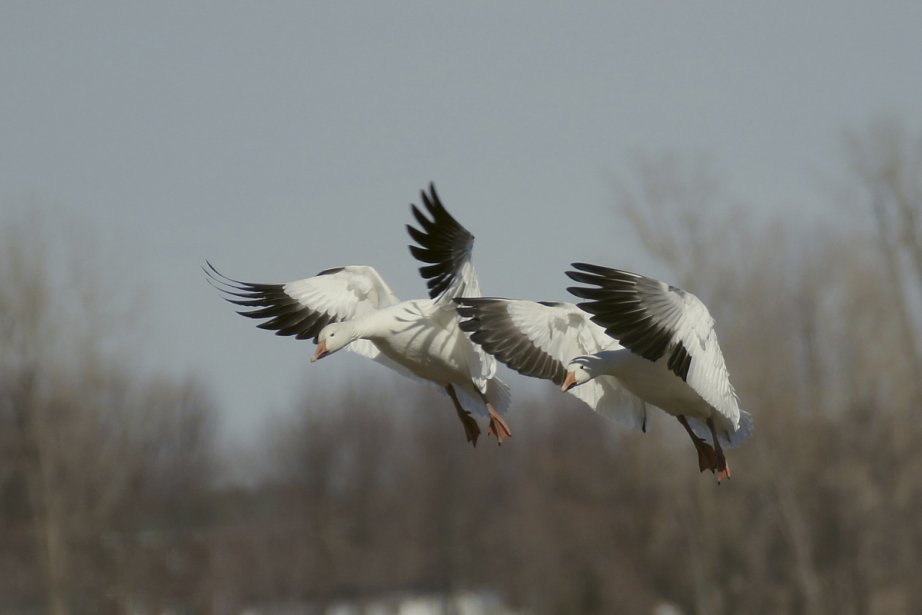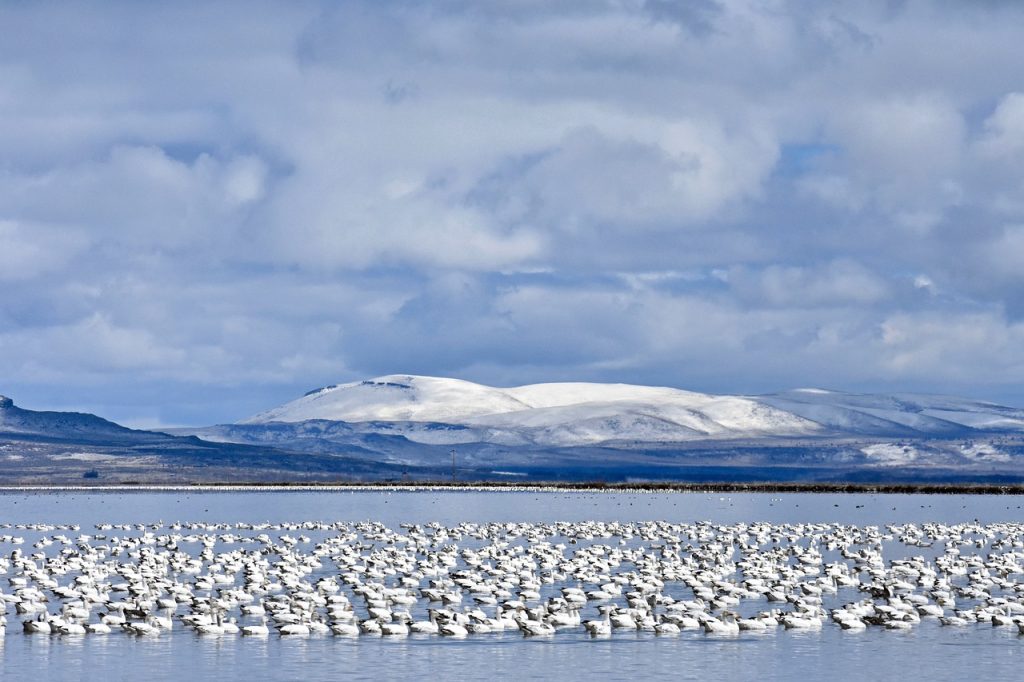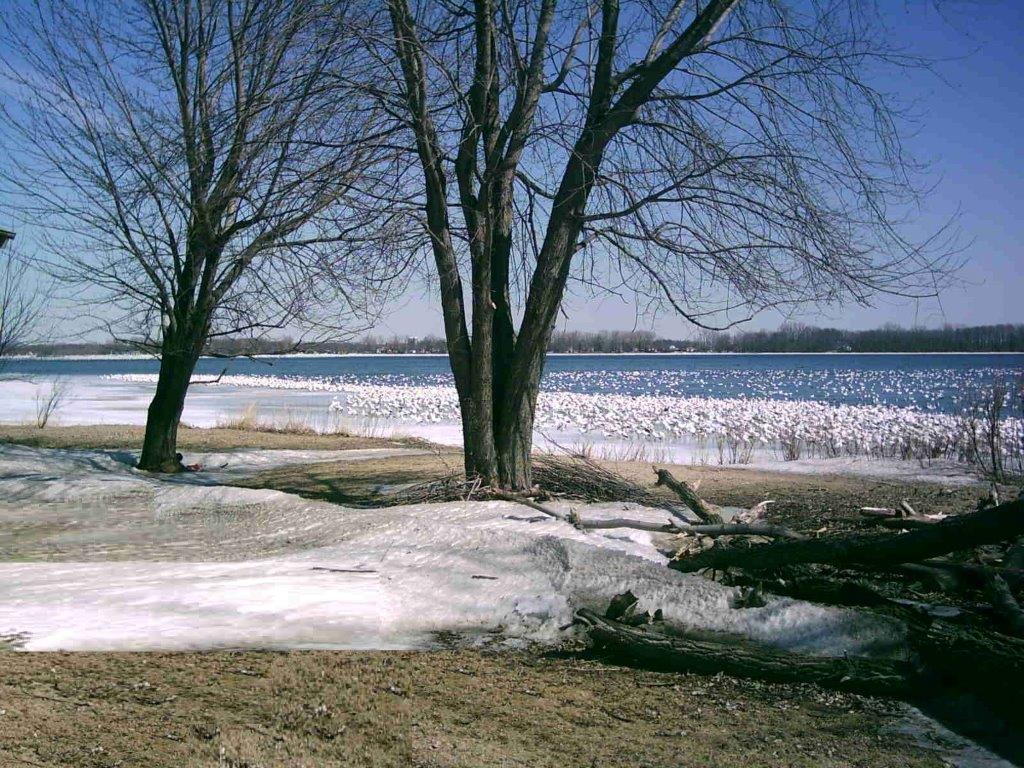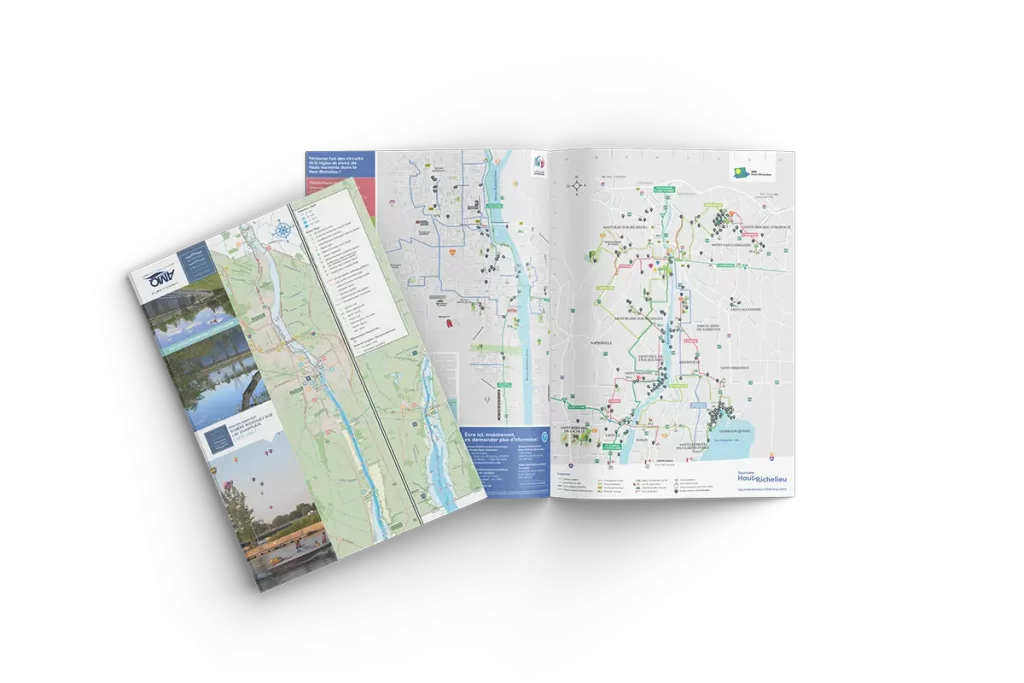Snow goose migration
As locals know, the Richelieu River is transformed into a blanket of white in autumn. During this migratory period, it's not uncommon to see flocks of white geese, also known as greater snow geese, making a stop on the Richelieu.

The start of the journey
After the breeding season, from June to early September, snow geese leave the High Arctic tundra for the Atlantic coast. They begin their migration when the water and ground begin to freeze. To reach their destination, the Atlantic coast of the United States, flocks of Greater Snow Geese divide their migration into different stages.
Stop in Haut-Richelieu
After a first stop in the Baffin Island region, the Greater Snow Goose takes flight again for an epic journey of over 1,000 kilometers. This second journey takes her to the St. Lawrence River region. It's during this period that we can observe the vast flocks of snow geese on the Richelieu River. These migratory groups can number up to a thousand geese, creating a vast blanket of white on the river. We are fortunate to be able to admire this spectacle during the first weeks of October. The geese fill up on energy during this period. They are herbivores, feeding on roots, bulrushes and even corn found in agricultural fields. This is why the Haut-Richelieu region is a perfect stopover for snow geese.
Note the Richelieu River Observation Point - Place Barnabé, near the intersection of Rue Champlain and Rue MacDonald in Saint-Jean-sur-Richelieu.
Here are just a few of the features!
- The average speed of snow geese is around 55 km/h, but they can reach speeds of 95 km/h;
- They are categorized as "dimorphic" since they can have two types of plumage. Most have white plumage, but around 5% of greater snow geese have blue-gray feathers;
- Its migration extends over 4,000 kilometers;
- From the age of one day, she can walk 30 kilometers non-stop.
We would like to thank the Canadian Wildlife Federation for this information. To learn more about the Greater White-fronted Goose, please visit their their website.









